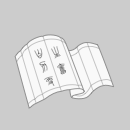
跨界设计
全新正版 极速发货
¥ 31.89 5.5折 ¥ 58 全新
库存3件
送至北京市朝阳区
运费快递 ¥3.00
作者王昀 著
出版社中国电力出版社
ISBN9787512399020
出版时间2017-01
装帧平装
开本16开
定价58元
货号1201428908
上书时间2024-06-30
评价30273好评率 99.94%
- 最新上架
商品详情
- 品相描述:全新
- 商品描述
-
作者简介
王昀,博士,中国有名的现代派建筑家,世界聚落研究的有名学者,执教于北京大学。2013年创立北京建筑大学建筑设计艺术研究中心(ADA)并任该中心主任,方体空间工作室、主持建筑师,其设计作品以纯粹和超现实的风格、富有哲学和诗意的空间特征广为世人所瞩目,被誉为当代中国的建筑诗人,建筑设计作品多次在靠前外获奖,并多次参加靠前有名建筑展。著有《向世界聚落学习》、《空间的界限》、《一座房子的哲学观》、《空谈空间》、《空间穿越》、《传统聚落结构中的空间概念》、《从风景到风景》、《空间的潜像》、《建筑与书法》、《中国园林》等建筑理论专著。
目录
序
导读
1非“透视学”视点下的“写生”
2从地形到空间的19个实例
实例2-1从“北纬23.4536.63",东经117.2211.19"”周边地形所选择出的建筑
实例2-2从“北纬23.5455.90",东经57.0602.58"”周边地形所选择出的建筑
实例2-3从“北纬31.5220.67",东经36.5839.98"”周边地形所选择出的建筑
实例2-4从“北纬31.5302.68",东经36.5223.09"”周边地形所选择出的建筑
实例2-5从“北纬32.1120.17",东经36.0846.05"”周边地形所选择出的建筑
实例2-6从“北纬23.4501.54",东经117.1403.03"”周边地形所选择出的建筑
实例2-7从“北纬32.1303.67",东经36.0835.01"”周边地形所选择出的建筑
实例2-8从“北纬32.1310.41",东经36.1403.79"”周边地形所选择出的建筑
实例2-9从“北纬23.5427.80",东经117.2836.57"”周边地形所选择出的建筑
实例2-10从“北纬32.0607.90",东经37.2211.49"”周边地形所选择出的建筑
实例2-11从“北纬14.5629.75",东经43.2325.95"”周边地形所选择出的建筑
实例2-12从“北纬14.5256.87",东经43.1750.12"”周边地形所选择出的建筑
实例2-13从“北纬32.1608.40",东经36.0548.26"”周边地形所选择出的建筑
3从自然中直接截取的建筑
实例2-14从“北纬53.5051.13",东经73.2412.32"”周边地形所选择出的建筑
实例2-15从“北纬34.1724.41",东经57.3320.18"”周边地形所选择出的建筑
实例2-16从“北纬39.5950.83",东经120.4355.90"”周边地形所选择出的建筑
实例2-17从“北纬37.3033.17",东经122.0032.90"”周边地形所选择出的建筑
实例2-18从“北纬35.3812.54",东经120.4643.01"”周边地形所选择出的建筑
实例2-19从“北纬40.4516.15",东经144.5245.92"”周边地形所选择出的建筑
实例3-1直接截取“北纬36.7584.63",东经110.4935"”周边隆起的地形所获得的空间形态
实例3-2直接截取“北纬37.4665.09",东经110.9991.12"”周边隆起的地形所获得的正向空间形态
实例3-3直接截取“北纬37.4665.09",东经110.9991.12"”周边隆起的地形所获得的负向空间形态
实例3-4直接截取“北纬24.3816.94",东经121.1184.74"”周边隆起的地形所获得的空间形态
实例3-5直接截取“北纬7.3252.19",东经134.4915.70"”周边隆起的地形所获得的空间形态
内容摘要
《跨界设计——自然与建筑》从自然形成的地形地貌中截取相应的形态,并以此进一步地对形态本身进行空间层面的观察与操作是该书的主旨。通过对所选取的地形进行空间图式的抽取与建模,进而整理出由地形所产生的拥有建筑含义的空间形态,其过程本身不仅仅是对于空间的观察,其所做的一切,事实上也是一种对于所谓地域性问题的描写与诠释。从俯瞰的视点对“地域性”表达进行新的思考和观测是本书的主要特质。本书适合从事建筑设计、研究及评论者阅读。
精彩内容
将大自然的地貌形态直接转化为具有建筑含义的空间形态,是这本书重点要讨论的问题。这种将自然与建筑相结合的想法,源于20世纪90年代末的一次从北京至成都的飞机途中。当我从由北京出发的班机上俯瞰到太原一带如刀削的地貌,俯瞰到进入西安一带的高原台地,俯瞰到四川境内烟雾缭绕的山峦,过程中所呈现的山形地貌的变化以及彼此间的对比,都在述说着地域本身所拥有的视觉特征。地形的画面感,河流的曲线,让我看到了其中所呈现的空间,看到了其中所呈现的建筑,自然也看到了展现于其表面的地形地貌所呈现出的体块特征。
随着卫星地图的发展,“鸟瞰自然”本身变得如此容易,获得大地图像的方式也变得如此轻而易举,而这种“鸟瞰自然”图像技术的发展最终也促使着观念的变化。于此所呈献的这本《建筑与自然》,是希望能够将我在这一系列“鸟瞰自然”过程中所看到的大地这一自然形态本身所呈现出的空间与建筑转而呈献给读者,希冀透过这一切,使读者能够由此而看到和发现更多自然本身正在呈现着的新的空间与建筑的世界。
The book focuses on the issue of direct transformation from natural landforms into spatialpatterns with architectural meanings. This idea of integrating nature with architecture originatedfrom a flight from Beijing to Chengdu in the late 1990s. Starting from Beijing, I watcheddownwards from the plane the difference and contrast among various landforms along thejourney, such as steep cliffs around Taiyuan city, plateaus and terraces around Xi’an city andmist-shrouded mountains in Sichuan province, all expressing visual features possessed byterritories themselves. The picturesque landforms and curvy rivers, in addition to presentingblock features on the surface, reveal space patterns and architecture forms contained within.With the development of satellite maps, it becomes easier and easier to “get a bird’s-eye viewof nature” and obtain images of land. Meanwhile, the development of such graphic technologymay finally promote change of concepts.
This book, Nature and Architecture, is expected to show readers what I have discoveredduring serial observations of “aerial view of nature”: space and architecture revealed by naturalpatterns of land. I hope readers can, through all these, see and find more new spaces andarchitectures worlds that nature itself is revealing.
王昀
Wang Yun
2016年05月
为你推荐

西游记绘本 共15册138元
九五品邯郸
¥9.00

西游记上中下
九品北京
¥30.00

评书艺术与欣赏
八五品衡水
¥3.19

西游记连环画
八五品北京
¥800.00

龙族Ⅰ:火之晨曦 龙族Ⅰ:火之晨曦 30w纪念
全新淮北
¥1980.00

林彪同志言论集
八五品武汉
¥680.00

红宝书:毛主席的六篇军事著作 (论持久战、抗日游击战争的战略问题、中国革命战争的战略问题、战争和战略问题、集中优势兵力各个歼灭敌人等,100开袖珍本)
八品株洲
¥18.00

新说西游记图像 1夹8册 清光绪石印 品弱(小说)
七五品北京
¥15000.00

九叠篆字集
九五品北京
¥99.00

飞鸥不下:全2册(抓到你了,我的鸥鸟。 盛珉鸥x陆枫*)
九品荆州
¥18.80

金庸作品集之大陆八九十年代百纳版之二 15部作品全共39册 青春回忆收齐不易 侠影萍踪还看金庸
八五品济南
¥459.00

金瓶梅词话校注(全4册)有函套 1995年一版一印
八五品信阳
¥700.00

毛泽东手书选集
九品济宁
¥2000.00

金瓶梅下册
八品济宁
¥40.00

孤本—后文艺复兴时代法国最壮观最稀有的官能美学巅峰之作——安托万•卡尔贝(CALBET, Antoine)唯一情色组图—欲火焚身(拟题)试印样稿
九品亚洲
¥1200000.00

红旗飘飘 15
八五品北京
¥15.00

礼包(光边签名本):<独家定制荷兰布面版> 贾平凹签名+钤印 · 台湾联经版《废都(1993年版)》(布面精装,一版一印)+周建国签名+ 限量函套布面精装版 + 龙纹篆刻“恭贺新禧”藏书票一枚《西泠周柬谷篆刻心经》附赠 影印手抄心经经卷一份+罗银胜签名+钤印《优雅百年——杨绛全传》+胡阿祥签名钤印+限量精装毛边本·《大地有名(附赠藏书票;何以中国书系)》(精装 一版一印)
全新北京
¥498.00

社论选
八五品金华
¥300.00

难哄
全新石家庄
¥29.00

新版爆笑校园等32开漫画系列【共10册合售,不分零】品相如图请看图下单
九品重庆
¥48.00
— 没有更多了 —
微信扫码逛孔网
无需下载














东北的得失,乃天下的第一大事。
全新,物流很快